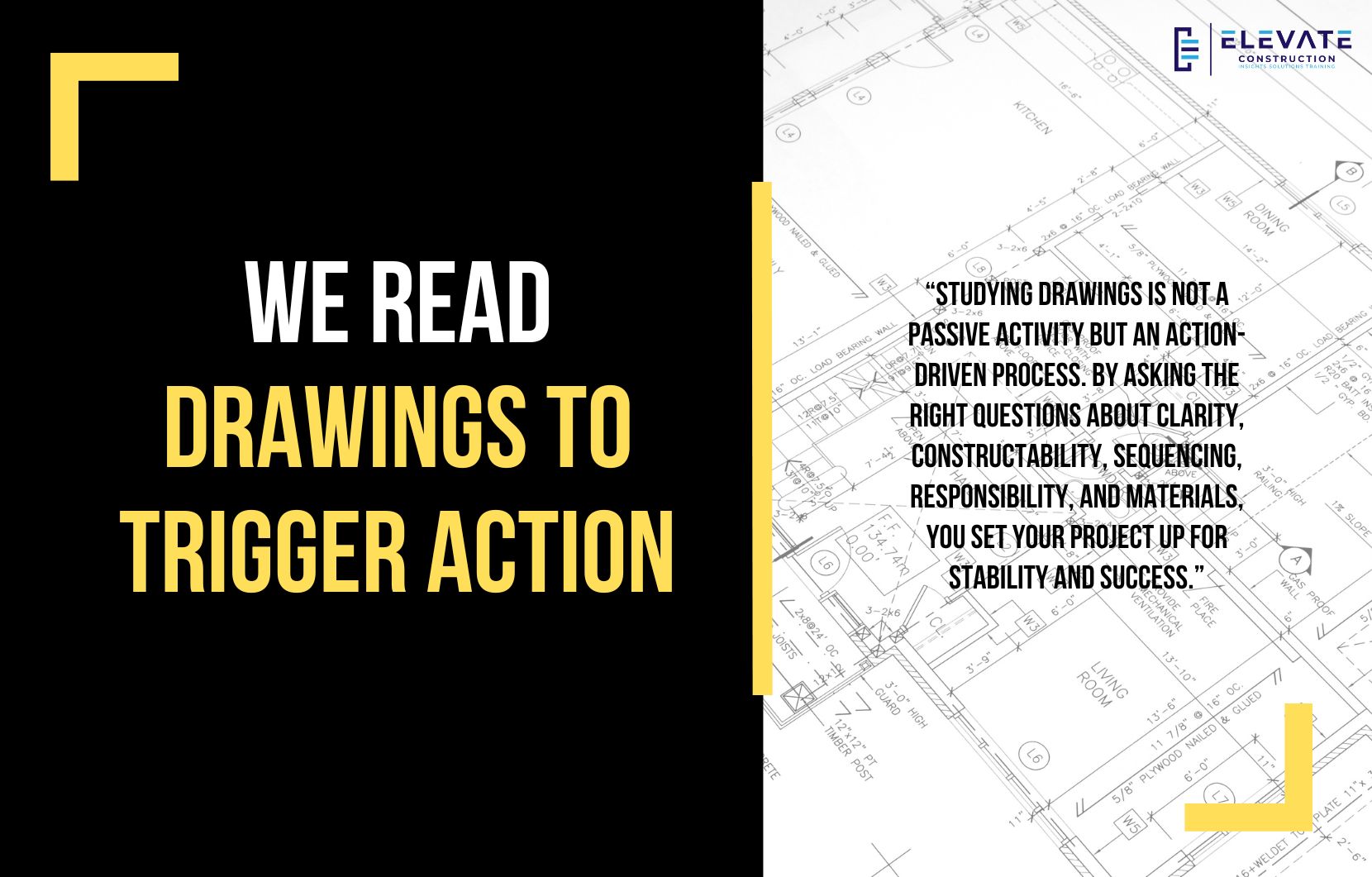How to Study Drawings the Right Way: Turning Reading into Action
Welcome everybody, we have a killer blog for you right here. This one is about what types of actions we should take when we are studying the drawings.
I hope you are doing well and staying safe out there. I also hope you are ready for a great weekend and that people around you have been encouraging, training, and supporting you.
I want to start with some inspiring feedback from one of our readers. He had applied to dozens of project manager and superintendent job postings without success. Despite nearly a decade of leadership experience as a command sergeant major in the Army, his lack of technical construction experience was holding him back. After listening to hundreds of my blogs and watching dozens of videos, he pursued certifications including Agile professional scrum master, lean green belt, and project management. Those certifications opened the door to his first interview and a new role as superintendent for a growing construction company with a strong culture and lean practices. He now loves going to work every day and learning from mentors. That is exactly why we do what we do.
Now let’s get into the main topic. When starting a project in pre-construction, it is critical to study the drawings effectively. I set a daily reminder to study drawings for 30 minutes, picking out items to delegate and adding them into our preparation. With only weeks before a project starts, this focus ensures we will not get caught unprepared.
So how do you approach drawings? Here are five guiding questions:
- Is the information clear? If you cannot draw it, you cannot build it. When drawings lack clarity or accuracy, write an RFI.
- How is it built? Visualize the construction through sketches, models, or mental practice. This helps identify sequence, equipment, logistics, or coordination needs.
- When and in what sequence? Place every element into the production plan. Update logistics and zone maps continuously.
- Who will do it? Project managers should highlight drawings to confirm every scope is bought out to a trade partner. If something is not assigned, it must be addressed immediately.
- Have we ordered the materials on time? Verify procurement logs and lead times. Without this, projects stall before they start.
Studying drawings is not just about reading. It is about triggering action, coordination, and preparation. When we consistently ask these questions and follow through, we ensure our projects are safe, organized, and successful from the beginning.
Key Takeaway
Studying drawings is not a passive activity but an action-driven process. By asking the right questions about clarity, constructability, sequencing, responsibility, and materials, you set your project up for stability and success.
If you want to learn more we have:
-Takt Virtual Training: (Click here)
-Check out our YouTube channel for more info: (Click here)
-Listen to the Elevate Construction podcast: (Click here)
-Check out our training programs and certifications: (Click here)
-The Takt Book: (Click here)
Discover Jason’s Expertise:
Meet Jason Schroeder, the driving force behind Elevate Construction IST. As the company’s owner and principal consultant, he’s dedicated to taking construction to new heights. With a wealth of industry experience, he’s crafted the Field Engineer Boot Camp and Superintendent Boot Camp – intensive training programs engineered to cultivate top-tier leaders capable of steering their teams towards success. Jason’s vision? To expand his training initiatives across the nation, empowering construction firms to soar to unprecedented levels of excellence.
On we go

